
If you’ve ever baked a gluten-free cake that came out crumbly or flat as a pancake, you’re not alone. Gluten flour does a lot of heavy lifting—it keeps cakes springy and holds everything together. Take that out, and you’re left with ingredients that just want to do their own thing. The good news? There are substitutes that can step up.
The trick is to replace gluten flour with something that mimics its stretchy magic. Basic swaps like almond flour or rice flour won’t be enough on their own—you need to think about structure, moisture, and flavor. That’s why the best approach mixes a few key ingredients, rather than using just one. And trust me, no one wants sandy, sad cake. With a couple of smart moves, you’ll get results close to the real deal.
- Why Gluten Matters in Cakes
- Top Gluten Flour Substitutes and How They Work
- Smart Tips for Better Texture in Gluten-Free Cakes
- Mixes and Add-Ins: Leveling Up Your Bakes
Why Gluten Matters in Cakes
Gluten is basically the teamwork between two proteins—glutenin and gliadin—found in wheat flour and a few other grains. When you mix flour with water and start stirring, these proteins link up and create a stretchy network, which is gluten. This network traps air from mixing and rising agents, holding your cake together and making it feel light and soft instead of dry and crumbly.
Ever wondered why a traditional birthday cake is fluffy but a gluten-free version often isn’t? The difference is all about that gluten network. Without it, cakes lose their structure, and what you get instead is usually a little denser and more likely to fall apart.
- Gluten gives cakes their familiar bounce and chew.
- It helps batter rise by holding on to the bubbles made by baking powder or soda.
- Without gluten, cakes can feel gritty, sandy, or just flat-out crumbly.
Check out how cakes compare with and without gluten in this quick table:
| Traditional Cake (With Gluten) | Gluten-Free Cake | |
|---|---|---|
| Texture | Soft, springy, holds shape | Can be dry or crumbly, sometimes gummy |
| Rise | Tall, even | Can sink or look uneven |
| Flavor | Neutral, lets other flavors shine | Depends on flours used, can taste grainy |
So if you want your gluten-free cakes to act more like the classics, you need to figure out a way to recreate what gluten does. That’s where the search for the gluten flour substitute really gets interesting. The good news? Modern options get better every year, and with some combinations, you can get pretty close to the real thing.
Top Gluten Flour Substitutes and How They Work
When you’re baking gluten-free cakes, the big challenge is finding something that can do what gluten does—make your cake springy and hold it all together. Here’s how the most common gluten flour substitutes work, and what makes them different.
- Gluten-free flour blends: These are mixes you can find at most grocery stores, and they’re a game-changer. Most blends combine rice flour, tapioca starch, and potato starch. Some also throw in a little xanthan gum or guar gum to help bind everything—this is super important because that’s what keeps your cake from falling apart.
- Almond flour: Made from ground almonds, this flour is moist and rich. It gives cakes a nice texture but can be a little dense, so you usually need to combine it with something lighter like tapioca or cornstarch.
- Coconut flour: This one soaks up a TON of liquid. If you try to swap coconut flour one-to-one for regular flour, your cake will turn into a dry brick. Use small amounts and add extra eggs or liquid.
- Oat flour: Made from ground oats, this flour brings a mild flavor and adds chewiness. Double-check your oat flour is certified gluten-free, since cross-contamination is common.
- Sorghum flour: It’s kind of a secret weapon in gluten-free baking because it mimics the mild taste and light texture of wheat flour pretty well.
Now let’s look at what the big brands are using. Here’s a snapshot of common ingredients in top-selling gluten-free flour blends:
| Brand | Main Ingredients | Has Binder? |
|---|---|---|
| Bob’s Red Mill 1-to-1 | Rice flour, potato starch, sorghum flour, tapioca flour, xanthan gum | Yes (xanthan gum) |
| King Arthur Measure for Measure | Rice flour, whole grain brown rice, sorghum, tapioca, potato starch, cellulose, xanthan gum | Yes (xanthan gum) |
| Pamela’s All Purpose | Brown rice flour, tapioca starch, potato starch, sorghum flour, arrowroot starch, guar gum | Yes (guar gum) |
If you’re making your own blend at home, you’ll want a mix of a neutral base (like rice or sorghum flour), a starch (like tapioca or potato), and a binder (like xanthan gum or psyllium husk). Getting this balance right is everything—otherwise, your cakes end up gritty, gummy, or dry.
Each substitute works a bit differently, and most people find that blending two or three gives the best results. Pay attention to how your batter looks and feels. If it’s too runny or too thick, make small tweaks the next time. Gluten-free baking can involve a little trial and error, but once you find your sweet spot, you’ll be making cakes that nobody can tell are gluten-free.

Smart Tips for Better Texture in Gluten-Free Cakes
Texture is everything in cake. If your gluten-free cake is dry or crumbly, nobody’s reaching for a second slice. The secret? It’s about what you put in, how you mix it, and yes, even how long you let things sit before baking.
Let’s start with the basics. Gluten’s role is all about giving structure and chew. Without it, you need a combo of ingredients that fake what gluten does. Here’s what helps:
- Gluten-free flour blends: Don’t just grab straight rice flour or almond flour. The best blends have a mix—rice flour, potato starch, and tapioca flour are popular. Look for a blend that already has xanthan gum or guar gum in it.
- Binders are a must: Xanthan gum and guar gum act like glue, holding everything together. Usually you need 1/2 to 1 teaspoon per cup of flour mix.
- Don’t skip eggs: Eggs add structure and moisture. Some cakes even turn out better with an extra egg. If you’re egg-free, flaxseed or chia eggs also work—1 tablespoon seed with 3 tablespoons water.
Moisture is also huge. Gluten-free cakes dry out quicker, so up your liquid by 1-2 tablespoons. Think milk, buttermilk, or even yogurt for extra softness.
If you really want a light, fluffy cake, let your batter rest 20-30 minutes before baking. Resting allows the starches to soak up liquid, smoothing out grit and giving a softer crumb. Most boxed gluten-free cake makers mention this tip for a reason—it works.
Baking is science, but you don’t need a lab. Here’s a quick cheat sheet of how different thickeners compare:
| Thickener | Common Use | Amount per Cup Flour |
|---|---|---|
| Xanthan Gum | Cakes, cookies, breads | 1/2 - 1 tsp |
| Guar Gum | Cakes, muffins, pancakes | 1/2 - 1 tsp |
| Psyllium Husk | Breads (not so much cake) | 1 tsp |
Extra tip: Use plenty of flavor—vanilla, spices, citrus zest—because gluten-free cakes can taste flat. And always check doneness five minutes early! Gluten-free cakes often bake a little faster.
Mixes and Add-Ins: Leveling Up Your Bakes
Getting a gluten-free cake that’s soft and holds together takes more than just swapping out the gluten. The right mixes and add-ins are game changers. Blending different gluten-free flours and a few helpers can mimic the stretchy, moist bite that everyone expects from cake. You’ll want to play with texture boosters like xanthan gum, guar gum, or psyllium husk—these ingredients help replace what gluten does for structure.
Most bakers don’t use just one gluten-free flour. A combination brings out the best in your bakes. Here’s a handy table that shows the most common gluten-free flours and their key features:
| Flour Type | Main Role | Tip for Cakes |
|---|---|---|
| Rice Flour | Bulk, light texture | Mix with starches for fluffiness |
| Almond Flour | Moisture, flavor | Add for richness, but not as main flour |
| Tapioca Starch | Chewiness, stretch | Combine with rice flour for better crumb |
| Sorghum Flour | Bread-like flavor | Works well in blends |
| Potato Starch | Softness | Helps keep cake moist |
So, what do the pros add to make gluten-free cakes taste like the real deal? Here are some tried-and-true add-ins:
- Xanthan gum: Just 1/2 to 1 teaspoon per cake recipe will keep your cake from falling apart. Too much can get slimy, so measure carefully.
- Guar gum: An alternative to xanthan, same rules apply. Not as strong but can help if xanthan upsets your stomach.
- Psyllium husk: A little goes a long way for tenderness and structure. Start with one teaspoon.
- Apple cider vinegar: Reacts with baking soda to make your cake fluffier.
- Applesauce or mashed banana: Adds moisture and binds ingredients in place of gluten. Use in moderation to avoid a dense cake.
One real-world tip? When homemade flour blends feel overwhelming, reach for a ready-made gluten-free cake blend. In a 2024 survey by Gluten-Free Living, 68% of home bakers found commercial blends more reliable for texture than single-flour mixes. If you go DIY, stick with a 60:40 ratio—60% grain-based flour (like rice or sorghum), 40% starch (like tapioca or potato). This gets you closest to regular cake in taste and feel.
Don’t forget to sift your dry ingredients well before mixing. It prevents clumps and makes for an even bake—something that matters even more in the gluten-free world. Stick with these tricks and you’ll never end up with gritty cake again. The right mix can turn a dry, bland cake into something you’ll want another slice of.


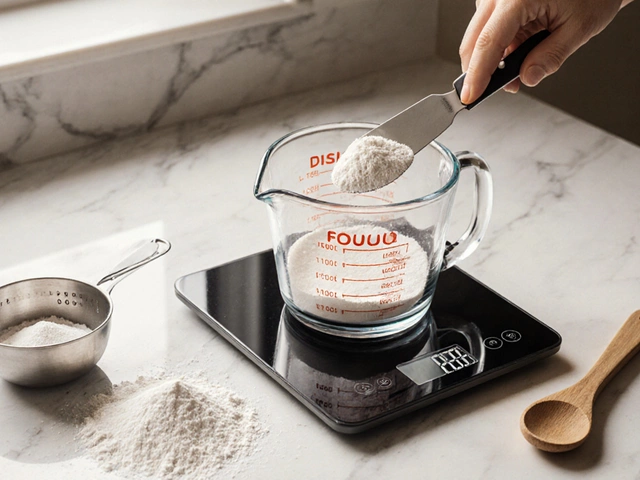




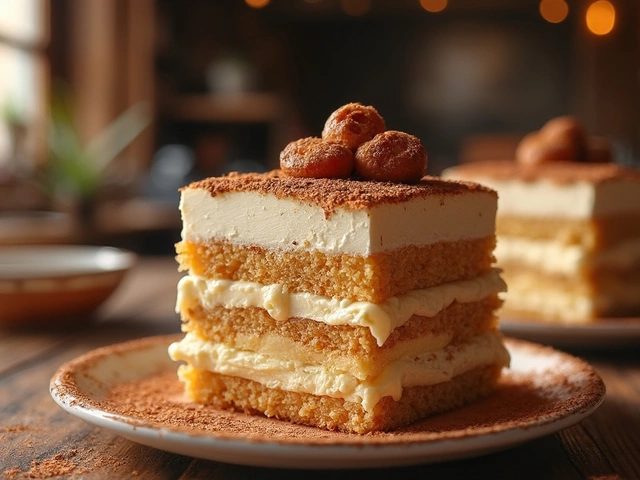
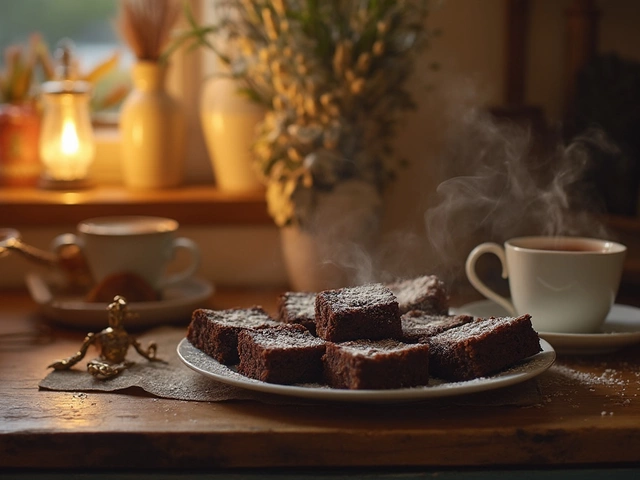
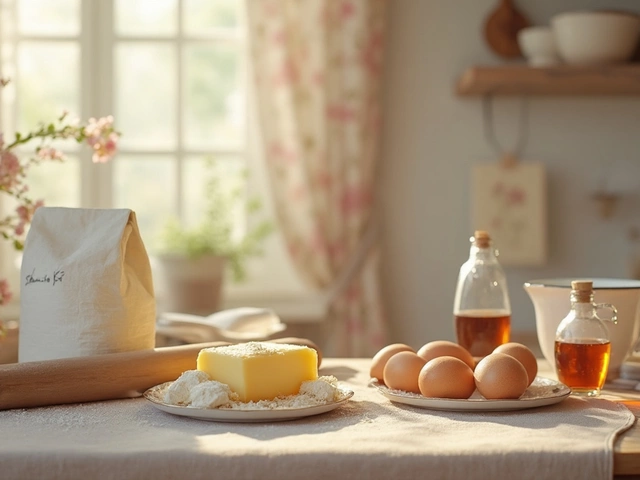
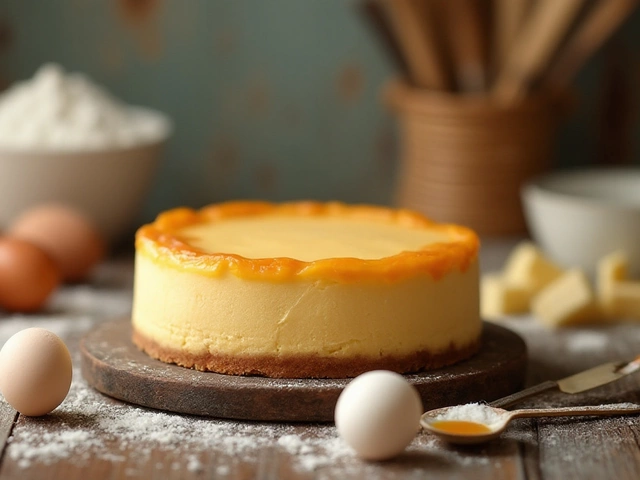

Write a comment